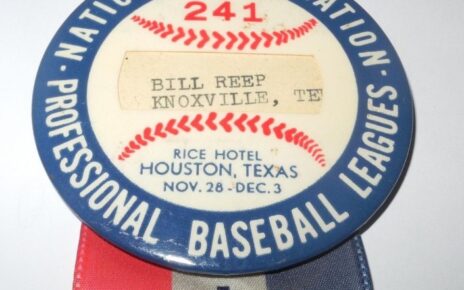The question of to win or not to win is a common refrain in baseball. Speaking of Major League Baseball teams specifically, the desire for control of players has become more important than winning. This, of course, grows out of the sabermetric movement to find the true value in baseball players. At least it is obvious to me that this is the case, but as it turns out a lot of old school sabermetricians disagree with this sentiment.
To be clear, this is nowhere near a major issue, at least not yet. In the here and now the articles and discussions about what, if any, blame sabermetrics deserves for the current MLB wide trends of market inefficiencies and controllable players mattering more than winning are idle fodder. All the same, it is an issue that seems to rear its head at least once a year, and every time the voices of the old school sabermetric folk are very loud in their denial in shouldering any of the blame for the current “sell now and win later” mentality that has taken over even winning MLB teams.
Joe Sheehan caught my eye this year, as he was engaged in a Twitter discussion where he vehemently fought back against any assertion that the sabermetric folks of the 1980s into the early 2000s deserve a shred of the blame for the current state of the game. His argument basically boiled down to sabermetricians going about their business of searching for value being a just cause and that none of them intended for their work to be taken to the lengths it has by major league front offices. Except, that’s not true in any fashion and is a very bad defense of the role that Sheehan, Christina Kahrl, Rob Neyer, Voros McCracken, Bill James, and so many others have played in crafting the current MLB landscape.
Sabermetricians may not have meant harm when they started digging deeper into the true value players hold. That doesn’t mean that they didn’t cause harm. Their research naturally spread to front offices and in their neverending search to save more and more money teams implemented sabermetric research to drive down free-agent contracts for veterans, keep rookies from the big leagues longer than needed, and justify long periods of tanking. More than anything front offices, which are now populated with many former online sabermetricians, took the data they were collecting and used it to justify not winning. The moment that front offices started talking about how many years of control they were getting out of a player as opposed to that player’s ability to help the team win is pivotal in how the sabermetric movement harmed baseball.
Now, I don’t believe that sabermetricians intended for any of this to happen. I think that then, now, and in the future sabermetricians and statisticians are researching baseball to better understand the game they love. However, it’s incredibly naive to not recognize that said research will be used by teams to change the game and not always for the better. I would actually put the majority of the blame on the front offices, only as previously stated most front offices are now full of former public sabermetricians. So, really, the blame deserves to be shared.
I know this article may come down like I am attacking sabermetricians, but I’m truly not. There can be two sides to most things and sabermetrics are no different. The search for player value can be genuinely curious, but that doesn’t mean that MLB teams won’t exploit the very same research to more nefarious ends. Sabermetrics has changed baseball for the better and unfortunately also for the worse. Old school sabermetricians need to recognize both the good and the bad they have done to the game.
Lead photo courtesy of Julio Aguilar – Getty Images




